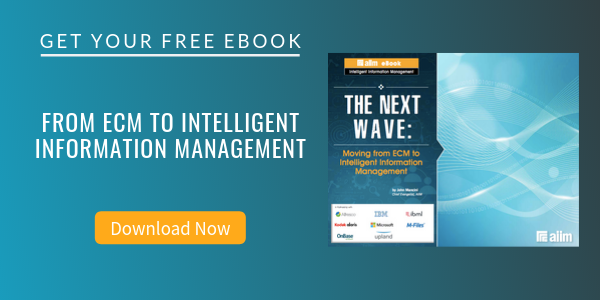
Supercharge Your Search Accuracy with Auto-Applied Email Metadata Upon Ingestion
As the amount of data entering the organization proliferates, and the amount of content with business value (deemed a “record” in many cases) also increases, organizations everywhere are struggling with a massive information overload problem. Content is running rampant and sprawling, and records are being captured improperly, making discoverability and the resulting value of that information significantly lower.
Properly capturing and organizing content is the solution. The focus needs to be on properly tagging and classifying content as it comes into the organization, not after the fact, which has long been the case in records and content management. Modern work has changed. The ever increasing petabytes of data required to do business in the modern world of work require utilizing metadata to tag content.
Why Metadata?
Metadata (aka tags, properties, labels) is the key component in any robust Information Architecture plan. Metadata describes a document externally, separate from the content contained within it. Metadata supercharges search accuracy and can function as a trigger for auto application of Microsoft Labels, which ensure appropriate retention and access rules are applied. As useful as metadata is, user adoption of the process of applying metadata at the point when files are ingested into a document management system has historically been a struggle. This is particularly the case with email, the "carrier" of so much organizational content.
How to Develop a Bottom-Up Information Architecture Approach
Develop your Information Architecture plans using a bottom-up approach, engaging each business unit to ensure storage is designed to meet the practical needs of the business, such as rapid and relevant search results or the ability to extract sets of documents to comply with regulatory audits or requests.
How can this be done? Here are 3 Recommendations:
- Use a leading content services platform (i.e., SharePoint) along with a third-party application to fill any functional gaps. Of course, the future of work includes more automation and more intelligence.
- Automate the application of labels to content as much as possible. The best approach is to marry the automation available today with some manual direction to ensure the appropriate labels are being applied, and to make the process as seamless and intuitive as possible. For records managers and administrators, this means enabling your team to auto-apply most metadata and save as easily as possible, while not having to police every move.
- Break down silos. Content today is stranded in silos; as part of Intelligent Information Management, we need to break down those silos first by recognizing that most records are still received through email today. In fact, knowledge workers spend 40% of their time in Outlook or other email applications. Bridging email with the content services platform or system of record of the organization (i.e., SharePoint) is critical to ensure content ends up in the right place and is searchable across the organization. This becomes even more imperative in the world of remote work, ensuring collaboration is easy and accessible from anywhere (and in the cloud).
In summary, including email in your Information Architecture design is essential when you consider how many company records enter your organization by email. Storing email in SharePoint with automatically extracted metadata is ideal to capture and preserve records and knowledge, and utilizing a third-party solution like Colligo Email Manager facilitates quick and easy email capture along with pertinent metadata for those utilizing SharePoint Online and Microsoft 365.
Improve the First Step in Your Information Lifecycle to Drive Value
The recommendations covered in this post will help you improve the first step in your information lifecycle. This crucial step is often referred to as the onramp for the downstream processes that follow. Getting this step right means the subsequent Intelligent Information Management steps will become easier.
For more best practices to ensure your content is driving organizational value, download a free copy of this ebook.
About Colligo
Colligo brings the best of SharePoint into Outlook and everyone’s favourite Microsoft 365 apps with easy-to-use and deploy solutions. Our email management, document management, and content management tools help organizations simplify knowledge and records management and compliance and get the most from your SharePoint investment. In business for over 20 years, Colligo is a Charter Member of the Microsoft Content Services Group and a member of the AIIM Leadership Council. (https://www.colligo.com/)



